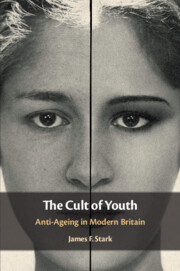2 - Hormones, 1918–1929
Published online by Cambridge University Press: 28 February 2020
Summary
Hormones were hailed in the early twentieth century as one of the most promising explanations for physiological function. This chapter shows how hormone treatments – not just those carried out by medical practitioners – influenced public perceptions of youth and ageing. Laboratory and clinical research influenced the marketing of commercial rejuvenation therapies, and commercial entities produced an enticing range of products containing hormones. The widely publicised research of gland-manipulating surgeons – particularly Eugen Steinach and Serge Voronoff – who gained notoriety by performing rejuvenating operations designed to restore bodily hormonal balance, attracted considerable press interest. The press carried numerous reports of procedures carried out on prominent society figures, yet for many these expensive and highly specialised treatments were out of reach. I argue the main contribution by the work of Voronoff and Steinach to British public life was to sustain a significant market of new hormone-based products, from dietary supplements and skin creams which claimed to restore natural bodily balance to medical hormone preparations designed to address fertility problems.
- Type
- Chapter
- Information
- The Cult of YouthAnti-Ageing in Modern Britain, pp. 24 - 67Publisher: Cambridge University PressPrint publication year: 2020



